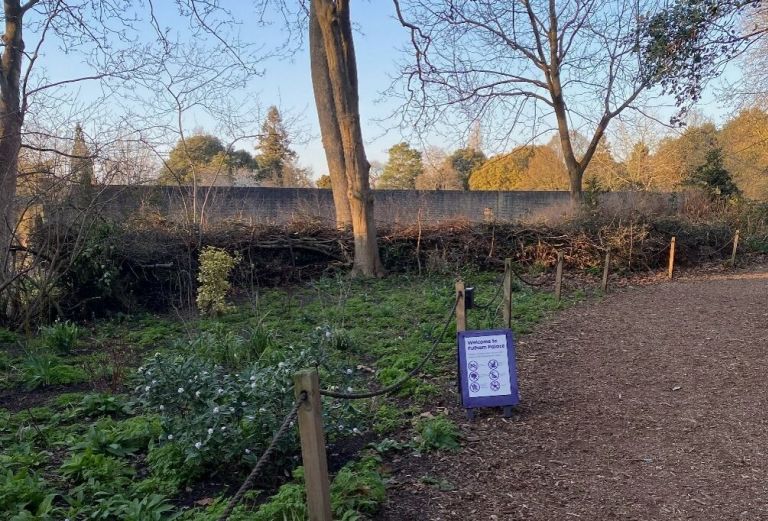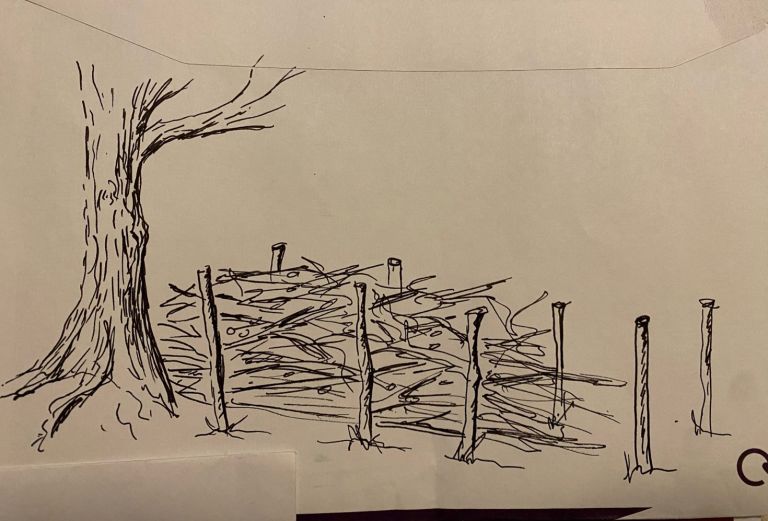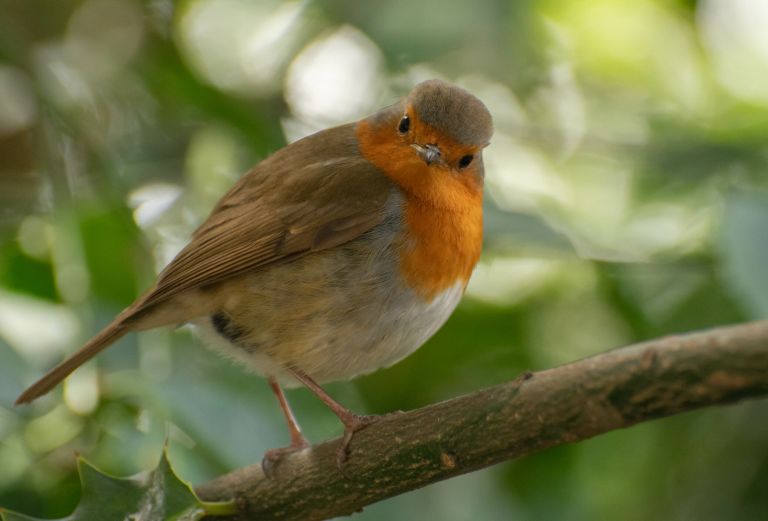
Written by Sophie Ridley, garden apprentice.
Sometimes things go wrong at exactly the right time. Spring is making its way to us as the earth’s axis begins to tilt towards the sun and the bulbs push their way through the softening ground. The gardeners here at the Palace are beginning to thaw out too. Thankfully the winter months bring lots of heavy work, like hedge cutting, pruning and coppicing. It keeps us warm when the cold comes to join us.
All this work produces a lot of material, material that is very woody and takes time to break down. When visiting the Palace, you may have seen we have an impressive compost system. One bay is set for all this material to be shredded which fills quickly in the winter. Normally this shredded/chipped material is use as mulch throughout the garden as well as to maintain our pathways.
This was, of course, prime time for our chipper to break! When things go a bit off script we make do and mend. This led to the birth of the the soon to be widely used expression: ‘When chippers break, dead hedges we make’. It’s not the first time we have made dead hedges here at the Palace and I’m sure won’t be the last. A dead hedge is essentially a barrier made of dead material, often about the hip to shoulder height and can be found winding around trees in woody areas. To make a dead hedge wooden poles or stakes are hammered into the ground opposite each other at 1-1.5 metres apart in regular intervals. The poles make a channel to stack material into, such as cuttings from pruning and hedge clippings. Using longer branches between the poles helps to initially create a wall and gives a bit more structure. It soon starts to look very full very quickly, but given a bit of time and the odd downpour all of the material will soon begin to drop, compress and begin to breakdown. Dead hedges will disappear to nothing eventually, going straight back onto the earth they grew from and leaving no trace they were ever there.

Not a new idea but one that is becoming more common practice, dead hedges have been around for a very long time. Before the countryside became industrialised into farm land where living barriers of hedgerows divide the view into field after field, humans had a more impermanent way of marking boundaries. As hunter gathers dead hedges were mainly used as protection in a nomadic lifestyle, branches cut from surrounding vegetation to make camp.
Today in woodland management many public gardens and parks use them as boundaries to protect ponds from dogs and to direct footfall onto new paths so that old ones recover. Most importantly they provide homes, protection and food for insects, mycelium, birds and small mammals. This is hugely important in winter as lots of our native plants go dormant and deciduous trees lose their leaves. A dead hedge can save you a lot of labour and create so much in the process. The world today moves so fast but we can slow things down for all sorts of creatures. We can offer a feeding place, a hiding place and somewhere to nest. A self-regulating barrier that will fade when its ready and has given back its nutrients to the soil. Many organisms like fungi and insects, are xylophagous, deriving from the Greek meaning ‘wood’ and ‘to eat’. Vast numbers of these insects that live off dead wood are under threat. These decomposers are essential for healthy soil as they break down organic matter and release nutrients that can then be taken up by plants. It might take a while for material to decompose but birds and small mammals can quickly colonise new habitats. Dead hedges make great hunting sites for black-fronted redstart, robin, wagtail, wren and tree pipit as well as nesting places for wrens and robins.

As well as making habitats hedges, living or dead, form corridors or highways from one habitat to another. This gives safe passage to animals, especially in a city where we have very fragmented green spaces. At Fulham Palace we have a strip of woodland which is left mostly to itself, though we implement some management here and there. We may cut back longer grass and re-sow wildflowers, but it is kept a wild area which is rarely walked through. It runs the along the length of the site separating us from Bishop’s Park. Interestingly, one of our bird surveys taken in 2021 indicated that we have a number of chiffchaffs, small birds that nest in thick vegetation near the ground. This a good sign that not having dogs on-site and keeping areas undistributed has given space for these birds to find a home, as well as other species the ability to pass through. Two of our dead hedges can be found in the woodland where we have places to stop anyone cutting through, the other (and possibly the best one!) can be found just by the back gate that leads to Bishop’s Park.
So, if you have the opportunity to create a little patch or dead hedge in your garden, you will certainly hear the rewards of your work even if you don’t see it. Just give it time and you may glimpse a new family of birds – and when your hedge has disappeared your soil may give you some surprises too!